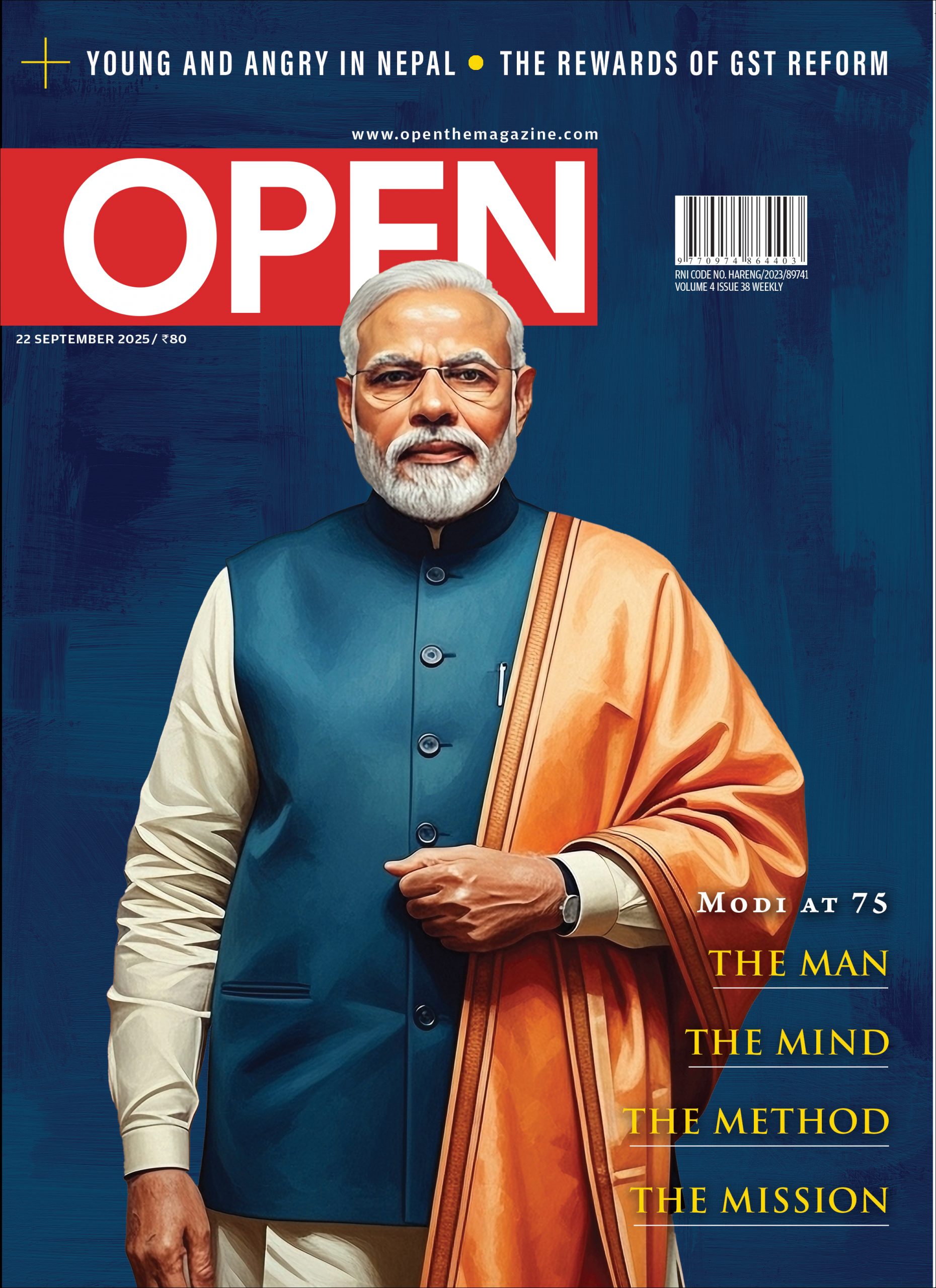When a Juvenile Rapes
The science and logic behind the definition of a ‘juvenile’. And the consequences
 Aanchal Bansal
Aanchal Bansal
 Aanchal Bansal
|
28 Feb, 2013
Aanchal Bansal
|
28 Feb, 2013
/wp-content/uploads/2015/11/juvenile.jpg)
The science and logic behind the definition of a ‘juvenile’. And the consequences
Out of work and cashless for a few weeks, the boy who would soon be known across India as ‘Accused No 6’—a ‘juvenile’ whose identity the law would not let the media reveal—decided to pay a visit to an old friend and former colleague Ram Singh, who lived in a jhuggi near RK Puram in South Delhi. They had earlier worked together for a transport company in East Delhi for about six months—Ram Singh as a driver and the boy as his helper. Singh had borrowed Rs 8,000 from the juvenile. Now was the time to remind Singh of the favour, decided the juvenile as he boarded a bus from Anand Vihar on a December afternoon. He reached Ravidass camp and found Singh’s shanty, which was near a gurdwara. Singh, friendly as ever, asked him to stay the night over.
The next day seemed like a regular lazy Sunday till the evening, when they decided to make some chicken and have a party with Singh’s brother Mukesh, Singh’s current helper Akshay Thakur and Mukesh’s friends Vinay and Pawan. What changed their plan was a call from Singh’s employer to get a gas cylinder. They decided to pull out the bus that Singh drove during the week, ferrying school children in Noida, and have their party aboard the vehicle while running the errand. What happened in that bus over the next few hours was extraordinary.
As a consequence of that evening, he became a ‘JCL’ (Juvenile in Conflict with Law). He stands accused in a case widely known as the ‘Delhi gangrape case’ and faces charges of rape, robbery and murder. The men and the juvenile had raped and beaten a 23-year-old girl so brutally that she eventually died, even though the entire might of the Indian State was employed to save her. They also battered her male companion with metal rods before throwing them both off the bus.
The juvenile, who was tracked through the girl’s debit card and her male friend’s cellphone, which had been stolen by her rapists, was nabbed by the police five days after the crime. The blood-spattered shirt that he had worn on the night of the crime was recovered from the roof of Singh’s jhuggi. While the rest of the five accused were put in Tihar Jail and face trial, the juvenile’s case was treated as special. Not because he was, according to the police, ‘the most brutal’ of the rapists, but because he needs to be tried by the Juvenile Justice Board, as the law demands.
Now, in a juvenile home owned by the government, he is reportedly in isolation. He can expect to be released in three years because, according to India’s Juvenile Justice Act, a guilty juvenile can be sentenced to only three years of confinement (or ‘institutional care’, as it is called).
The Juvenile Justice Act (JJA), under which all ‘juvenile offenders’ are tried in India, defines a ‘juvenile’ as a boy or girl under the age of 18. Under this law, capital punishment or life imprisonment cannot be imposed for offences committed by a juvenile. The gravity of the crime is irrelevant. The Indian Penal Code fixes the age of criminal responsibility at seven, which means that the law absolves children below that age from the responsibility of any type of crime they commit. Children over seven come within the ambit of the JJA, though the Board may use its discretion on cases of offenders up to the age of 12.
Moreover, India is a signatory to the UN Convention on Rights of the Child, which considers anyone under 18 a ‘child’ and mandates that the child’s best interests must govern any decision that concerns him or her. The JJA, in its current form, was enacted in 2000 and changed the age bar for boys from 16 to 18 (the same as that of girls) in keeping with the Convention’s provisions.
In the past few months, controversy has raged over juvenile delinquents. Since the December gangrape, Delhi has seen six petitions—one by Subramanian Swamy—filed in various courts that seek to challenge the age bar set for trying juvenile offenders and draw ‘gravity of the crime’ into focus as a key determinant of the punishment due. The Supreme Court, which recently admitted one such petition, has ordered the Centre to reconsider the age bar; a hearing on the matter is scheduled for April.
Policy researchers and psychologists, however, uphold the validity of the 18-year age bar. “The adolescent years are the most vulnerable as the child is gradually moving towards developing a sense of the self, asserting autonomy and independence. In an effort to do so, he or she may take risks through experiments that may result in petty or grave offences,” says Vijaylakshmi Arora, a policy expert at CRY (Child Rights and You).
According to records of the National Crime Records Bureau (NCRB), 33,887 juveniles were arrested in 2011 for 25,178 instances of crime, including rape, murder, kidnapping and abduction. Of these, 1,211 were in the 7-12 age group, 11,019 in the 12-16 age group and 21,657 in the 16-18 age group.
In 2011, 1,210 boys under 18 were apprehended for rape across the country; this was 12 per cent of the adults nabbed for that crime the same year. Activists and counsellors, however, claim that the story lies between the lines. “There was less awareness in 2001. Over 70 per cent of the cases registered with the Juvenile Board are cases of consensual and experimental sex between two minors.They are booked as ‘rape’ cases because of the age of the girl involved,” says a counsellor.
“[In adolescence], there is visible physical and sexual development towards adulthood, but cognitive development is not complete,” says Arora.
Cognitive development, in the view of psychologists, is the ability to envision the future or ascertain the consequences of one’s actions. “To put it simply, a child who wants to jump off a table will do it without thinking of the consequences and we accept it because s/he is a child,” says Naveen Kumar, a psychologist and trustee of the Manav Foundation, which runs mental health facilities at several welfare homes for children across Delhi. “[A juvenile] might be breaking the law and may have XYZ reasons for it,” he explains, “but he will still do it because he hasn’t completed that stage of development.”
Children from broken or dysfunctional families often display weak cognitive development. According to an assessment by Manav Foundation on 170 juvenile boys who were counselled over the past six months, 56 per cent had disturbed family backgrounds.
According to Kumar, when a child is apprehended and brought to the Juvenile Justice Board, the primary screening involves tests to gauge the state of his or her mind. Questions begin with basic information about their families, and proceed, if the need arises, to ascertain psychopathic tendencies. “Most of them are typical cases of lack of engagement with their school, family and friends,” says Kumar.
According to Anant Asthana, a lawyer who frequently represents juveniles at Board hearings, socio-economic factors play a significant role in delinquency. “The distress, tension and chaos that exist in dysfunctional and abusive families affects the behaviour of children,” he says, citing the example of a 14-year-old boy who killed his father. “It was a typical case of domestic violence. This child, who had seen his abusive and violent father physically and mentally torture his wife for many years, used to feel sad about his mother’s misery, and one day this child reacted on an impulse without realising the consequences of his action.”
Delinquency afflicts urban-industrial societies the most, in his observation. “When the family fails to offer emotional and social protection, which all children deserve, they start looking outwards. If there is violence and deviant behaviour out on the streets, then it influences such children,” he says.
In reaction to the police claim that the Delhi gangrape victims reported the juvenile as ‘the most brutal’ of the lot—as conveyed by the media in the week after the incident—Asthana says that it is a ‘brutal’ child who is most in need of help. The chargesheet does not mention the juvenile’s brutality. “But even if he was,” says the lawyer, “he was in the company of highly deviant and irresponsible adults.”
The eldest of six siblings, Accused No 6 had to drop out of school in class three after his father, a daily wage labourer, was left mentally challenged in an accident at a construction site near his village. His mother barely made Rs 1,000 per month as a farm labourer, and the house was too crowded for all of them. He escaped his poverty-stricken family by boarding a bus—when he was probably about 11—to Delhi and doing odd jobs.
He lived and worked in a dhaba before becoming Ram Singh’s helper. His adolescent years were spent on the streets of Delhi, not in the comfort of a place called home. His mother claims that she had not seen him since he left the village six years ago, and thought he was dead.
The JJA’s broad aim is to reform young adults who may have achieved adulthood physically but are yet to grasp how to adhere to the norms of adult life. “They are still looking for a grip in life—through role models and stability,” says Asthana, “If that doesn’t happen, you end up staring at rising crime figures.”
Bhupesh Chandra Samad is sitting at a table surrounded by worried parents and their ‘juveniles’. Some of the parents weep, even as these JCLs stand in what seems like stoic silence. A public prosecutor at the Juvenile Justice Board II in Delhi, Samad deals with over 20 cases a day. He is unaffected by the commotion around him. His thick file of papers is filled with diagrams of the human skeleton and jaw. He says he has achieved proficiency in ascertaining an individual’s juvenile status through medical tests.
There are three tests to check if an accused is a juvenile. The first is a physical examination done by a general physician. It records the height, weight, facial hair and width of the chest and shoulders. The second test is an opthapantomogram X-ray that does a panoramic scan of the lower and upper jaw. Adults have 12 molars, in four sets of three; the rearmost in each is commonly called the wisdom tooth and usually appears when a person is 20. The third test is the crucial bone ossification test that measures the development of bone tissues in limbs and joints. The key points scanned are fingers, elbows, knee joints and ankles. Bones reach full development only when a person is in his or her early twenties.
None of the tests is free of error, Samad admits. The bone test, for example, has a two-year margin of error. After all, physical development depends on such varied factors as genetics, nutrition and general health. “South Indian boys can look older than say pahari boys, though they may be the same age,” he says. “My job is to work on proof over paper. The doctor does the examination and puts it in a report. I take a look at it, tally it with the notes I have made over the years, and fight my cases. Children are the easiest to pick up and put in jail for a crime. There is often a tussle between legal aides and the police to get the child back to the juvenile legal system.”
By his school admission records, the juvenile in the Delhi gangrape case was found to be 17 years and six months old at the time of his alleged crime. “Preference is given to documentary proof because it is assumed that at the time of getting a birth registered or child admitted to school, there is no reason to hide such facts,” says Kumar. The principal of the government school the juvenile had attended claims that he had roughly calculated the birth date of the boy when he was enrolled in class one as ‘4 June 1995’, and he filed this date in school records. “A bone test is done only if there is lack of documentary proof,” says Kumar, “Here, his school papers reveal his age. If they say that he is a juvenile, then he is one.”
Child rights activist Bharti Ali of Haq, an organisation that works with children booked under the juvenile law, believes that India’s juvenile legal system offers an opportunity to reform underage offenders. In her opinion, this ought to apply to every such case, regardless of the so-called ‘gravity of the crime’.
“There is a reason why boys are allowed to marry only at 21 or you are allowed to vote only at 18 and enter a contract only when you become a major,” Ali says, referring to the need of cognitive maturity for all these. Sexual immaturity, she says, is part of the overall immaturity of a juvenile.
The key, Ali says, lies in strengthening India’s reformatory justice system and probation laws. “We are still dealing with basic issues like [the need of] trained counsellors and adequate parole officers,” she says. Even Delhi has only 21 parole officers who are expected to keep juvenile cases in the city under their watch. The city has only two boards, each of which hears at least 30 cases every day. “As a result, there is no effort to invest in a child after he or she has served his or her sentence for an offence,” she says, “It is all about shutting the case and moving on to the next.”
According to Dr Rajesh Kumar, executive director of the Society for Promotion of Youth and Masses (SPYM), which runs a de-addiction centre with the Delhi government, the current system is short of the tools needed to deal with juvenile cases. “The JJA was formed to decriminalise the offender and treat him or her as a child,” he says, “but we do the exact opposite by putting them in homes and forgetting about them. Boys usually run away from homes after being treated because they fear the foul and hostile environment there.”
Not far from the SPYM’s centre in North Delhi, in a Juvenile Justice Board at Kingsway camp, three JCLs stand in a huddle. Booked for the murder of a worker in a temple of their colony in Najafgarh, they are waiting for a fourth friend to arrive. While the case has been on for nine months and they are out on bail, they have to make an appearance before the magistrate every month, even as statements of all involved in the matter are recorded. The fourth friend is also an accused and often misses the appointed date because he is a sweeper and fills in for his grandmother who cannot work any longer. “His parents died when he was very young and his uncle is an alcoholic,” says the leader of the gang, a 17-year-old who recently quit school and took up the job of a helper with a private bus company. “I make about Rs 8,000 a month and there is no tension about going back to school and getting into fights,” he says.
“We hated school and would hang out together,” says the gang leader, “None of us can go back because we are better off outside with our money and own time. I just don’t want to go back to the observation home and live there. Those days of detention have been the worst of my life so far.”

/wp-content/uploads/2025/09/Cover-Modi-scaled.jpg)











More Columns
The Indian Exception Siddharth Singh
I Missed A Flight Thanks To Robert Redford, Plus He Took My Magazine! Alan Moore
Robert Redford (1936-2025): Hollywood's Golden Boy Kaveree Bamzai